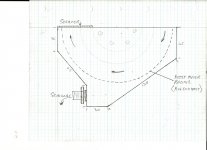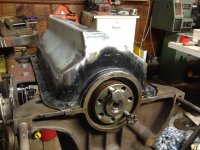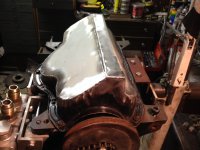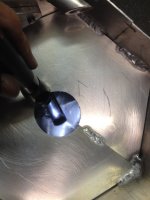I’m building another engine for the race car and I will stick my process and progress up here for anybody to follow if they are interested. Your approval or disapproval might become interesting. If I am not mistaken I think it is only the Peugeot guys that have gone this way here on AF.
It happened a long time ago when the then doyen of Gordini racing cars, Brian Evans, told me “you will never make a reliable G motor unless you go dry sump”. Now that was like an “I dare you” to me. Brian’s cars were really quick and everybody envied him and his daughter Cindy’s cars. Geckoeng will know him very well.
So I was lucky enough to build reliable motors with wet sumps and for the first time in a long while somebody overtook Cindy down the pit straight at the Midvaal track in ZA.
Now I am going Brian’s way and doing a dry sump. There is a start in the other thread but I will post some pictures here to re-start the thread.
The sump shape is like that because I believe it will catch and collect the oil more effectively. With the “wall” or “vertical” on the one side the oil that will be scraped off by the scraper will run down into the gutter quicker to be sucked back to the tank. It was also very easy to make by closing it up with only 2 plates welded in. I leak tested it with BrakeClean and all is OK. In the drawing is the position of the scraper.
This image will show the wall I am talking about.
Regards Frans.
It happened a long time ago when the then doyen of Gordini racing cars, Brian Evans, told me “you will never make a reliable G motor unless you go dry sump”. Now that was like an “I dare you” to me. Brian’s cars were really quick and everybody envied him and his daughter Cindy’s cars. Geckoeng will know him very well.
So I was lucky enough to build reliable motors with wet sumps and for the first time in a long while somebody overtook Cindy down the pit straight at the Midvaal track in ZA.
Now I am going Brian’s way and doing a dry sump. There is a start in the other thread but I will post some pictures here to re-start the thread.
The sump shape is like that because I believe it will catch and collect the oil more effectively. With the “wall” or “vertical” on the one side the oil that will be scraped off by the scraper will run down into the gutter quicker to be sucked back to the tank. It was also very easy to make by closing it up with only 2 plates welded in. I leak tested it with BrakeClean and all is OK. In the drawing is the position of the scraper.
This image will show the wall I am talking about.
Regards Frans.
Attachments
Last edited:








